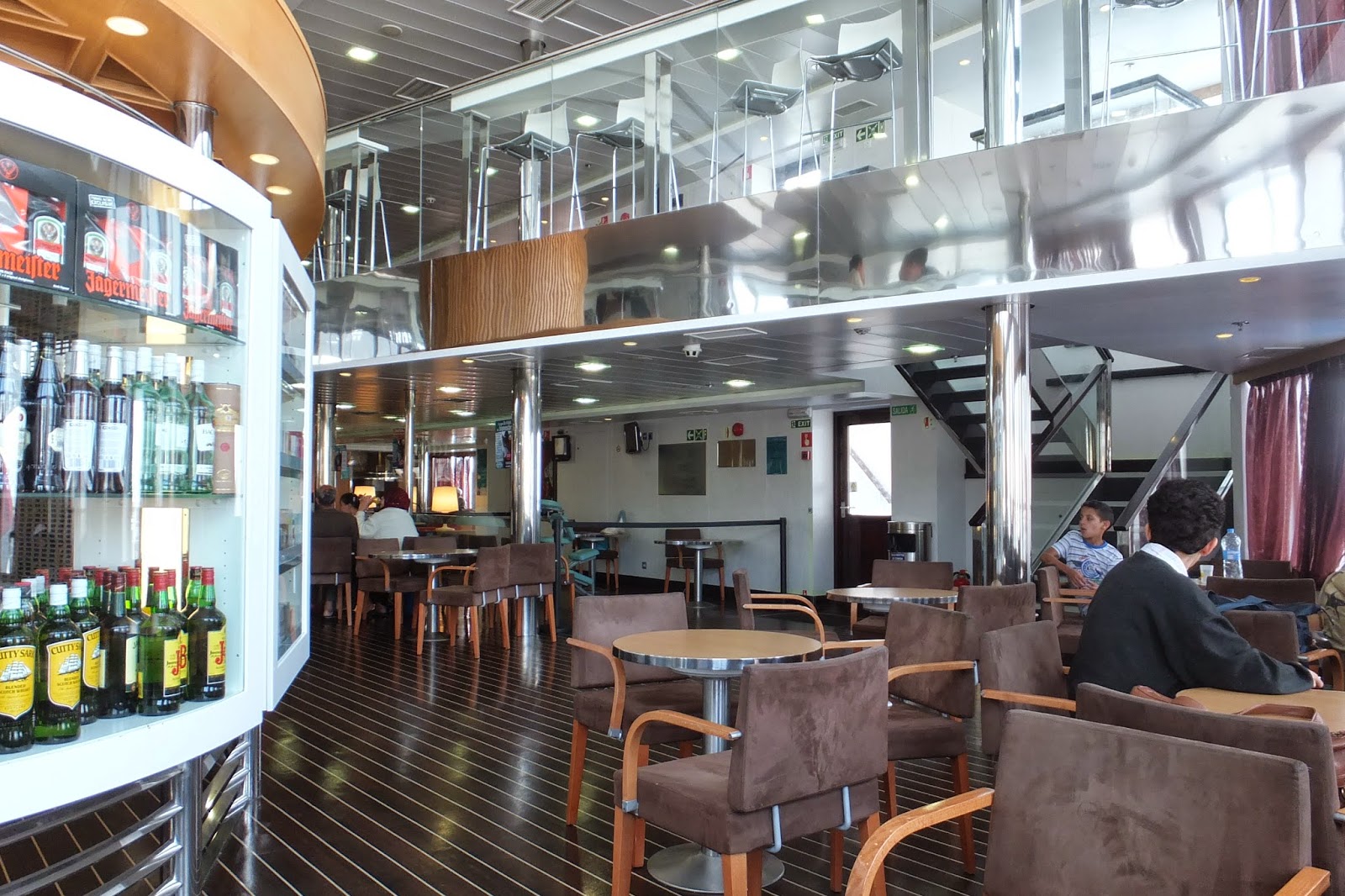 |
| Not a sight typically seen on Australian beaches. |
Travel Dates 29th June - 1st July 2013.
I took a cab to the Renfe station in Cordoba for the ATR train to
Algeciras, which is the Spanish town next to Gibraltar. The train left exactly on time. As usual I had a book to read but enjoyed the passing scenery instead; an example was this unknown village and castle.
I'm not sure why, but despite having read with interest much about the history of Gibraltar I was not particularly interested in visiting 'The Rock', so I didn't bother
taking the bus to it. Instead I spent a quiet afternoon wandering the dock area and checking out
the ferry arrangements for the next day. Algeciras is a fairly
forgettable port town.
I intended taking the shuttle bus in the morning to Tarifa and the ferry direct to Tangier from there. Unfortunately
high winds and consequent high seas at the gates of the Mediterranean
had closed the port at Tarifa, so I had to take the Algeciras – Tangier
Med ferry and pay 200 dirhams ($25) for a cab for the 60km trip to town.
I had been told there is a cheap shuttle bus, but I could not find it.
If you are planning to
take that ferry, keep in mind that there is an
immigration check point before you can board. My ferry was due to leave
at 1400; I thought I had plenty of time when I arrived in the queue at
1330. But with only one immigration officer on duty, with a supervisor
who refused to add a second station, I was still in the queue at
departure time. So were many other passengers for the same ferry. After
immigration we raced along seemingly endless enclosed corridors to the
ship, with strategically placed staff offering directions at junctions.
The ship departed almost an hour late, presumably they allowed for the delays. Or maybe it was just luck.
On board the ferry, which was impressively modern and comfortable, was another immigration queue for entering Morocco. Two officials added an entry stamp and a visa number. There was no sign, nor did I hear any announcements. I happened to see the queue and asked what it was for. On landing there was a final check-point for Moroccan customs.
After the final customs check, having failed to discover the bus to Tangier, I experienced my first Moroccan Grand Taxi.
They are all very old Mercedes sent to Morocco to die but refusing to do so. They are used for inter-town trips, with 'Petit Taxis' used within towns. After my brief sojourn in Morocco I came to the belief that all of the Mercedes built from 1960 to 1980 were sent to Morocco after they became unfit to travel on European roads, to serve many more decades as Grand Taxis. I used five during my visit. One was clean inside, the rest were filthy. All required a request for a window-winder from the driver to operate any of the windows, none had a working air-conditioner in a country where 37C(100F) can be a cool day in June, most of the seats 'floated' with no apparent connection to the chassis, but all the Grand Taxis seemed surprisingly stable on the road.
 |
| The grand view from my first Grand Taxi. |
 |
| En-route from Tangier Med to Tangier |
I booked in for an overnight stay in the Ibis beside the railway station. It was clean, reasonably comfortable and very convenient for the train to Fes the following day. Petit Taxis were waiting at the station so I took one to the Medina in Tangier and spent the next few hours wandering the Medina and soaking up the atmosphere.
By chance, after an interesting but long, hot and dusty walk I reached the beach and came across one of the few bars in an Islamic city. The bar was nothing special, full of tourists from the other side of the Mediterranean, but that was a memorable cold beer; the first one didn't hit the sides. After a pleasant hour I wandered down-town searching for a restaurant to try my first tagine. It doesn't look like much, mainly beef with prunes, but it was delicious. I tried to eat some form of tagine daily for the rest of my visit.
Cheers, Alan













No comments:
Post a Comment